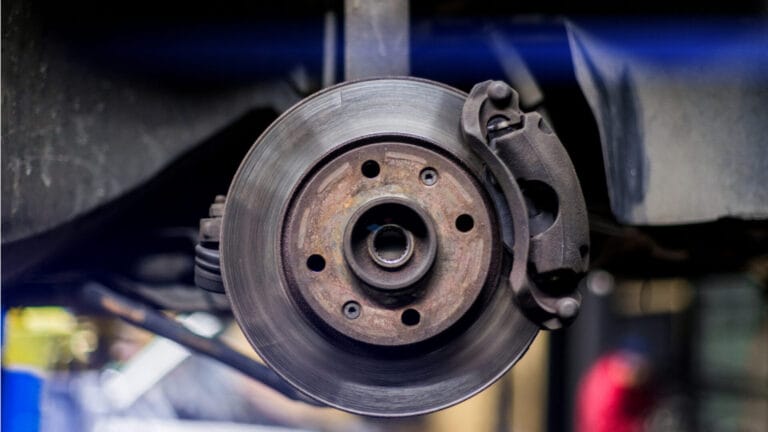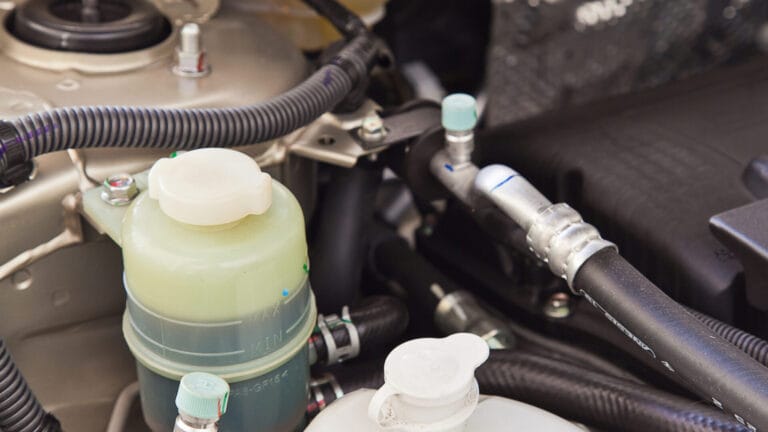Which Brakes Are More Important, Front or Rear? [Answered]
Whether you navigate the busy city streets or cruise down the highway, the braking is the thin line between you and an unfortunate event.
But between the front and rear brakes, which is more important? The front brakes of your car are more important and effective in multiple situations than the rear brakes. The ability to deliver instant stopping in high-speed circumstances makes them a lifesaver. More so, front brakes obtain more clamping force and absorb friction and heat.
However, that doesn’t make rear brakes obsolete, nevertheless. They provide stability and balance to an automobile. In this write-up, I’ll explore them in broad detail.

Understanding Automobile Brakes
Brakes, in general, are put in place to stop, control, and maneuver your vehicle. But how do they function?
You see, the braking system of a vehicle transforms kinetic energy generated by the engine into heat energy. That is by imposing friction on the moving wheels.
The brake pads apply force against a rotating disc or drum that is attached to the wheels. A hydraulic system controls these brake pads or shoes. It utilizes fluid to create pressure and then transfers the force from the brake shoes to the brake cylinder of each wheel.
Meanwhile, mechanical brakes AKA drum brakes act differently. Devoid of liquid pressure, it uses friction to stop the vehicle. Be it motorbikes or cars.
When pressed, a linkage cable works on the brake shoes to press them down on a drum and generates friction.
So, when enough resistance is produced due to friction, the car stops.
Front & Rear Brakes: A Deep Dive
Front and rear brakes are quite different in functionality and components. Also, in terms of impact on the vehicle’s braking performance. Before my thorough dainty analysis, you can take a glance at how they compare with each other.
| Key Aspects | Front Brakes | Rear Brakes |
| Location | Front wheels. | Rear wheels. |
| Force | Applies high braking force. | Comparatively lower |
| Impact | Delivers most of the stopping force on the vehicle. | Provide balance and stability to stop the vehicle in a straight line. |
| Type | Typically, these are disc brakes. However, drum and anti-lock brakes are also found. | Mostly drum brakes. Also comes in disc or parking brakes. |
| Importance | Better braking performance and heat dissipation. | Cheaper and easier to maintain due to incorporating drum brakes. Helps prevent vehicles from rolling away. |
1. Front Brake Functionality Overview
The name is self-explanatory. These brakes are placed on the front wheel of a car or other automobiles. Just suffice it to say that front brakes are way stronger and important than rear brakes. Front brakes provide 75-90% of stopping power, depending on the situation.
This is because when you brake, the weight shifts forward. As a result, the pressure on the front wheels and tires increases significantly.
While in action, the caliper pinches down brake pads to produce friction on the rotating metal disc. This slows down the wheel and stops the vehicle.
- Key Components of Front Brakes
Modern vehicle’s front brakes are disc brakes. So, I’ll enlighten you on the components of such a type of front brake.
- Calipers: These are housing for pistons and brake pads. When they meet enough pressure through the brake pedal, push the fluid and move the pistons inside the housing. As a result, the pedals get hold of the rotors.
- Brake Pads: Braking pads are friction materials that contact the rotor and stop it from spinning.
- Rotors: The actual metal disc is called the rotor. They spin alongside the wheel and provide enough pressing surface for the brake pads.

Figure: Front disc brake components (Image Source)
- Type of Front Brakes
If you pay attention, you’ll find most of the vehicle’s front brakes to be of disc type. But there are some other variants as well. Typical front brakes are:
- Disc brake
- Drum brake
Now, disc brakes offer incredible performance, durability, and efficient heat dissipation compared to drum brakes. This is why front brakes have them.
- Importance
- For emergency stoppage, the front brakes have no replacement.
- The design and placement of front brakes optimize weight transfer and maximize stopping performance.
2. Rear Brake Functionality Overview
Rear brakes do not perform the heavy lifting like the front brakes. These are responsible for delivering a braking power of less than 40%. They are engineered in such a way as to ensure the stability of your vehicle.
Also, they withstand low temperatures. All of these make the rear brakes less important than the front brakes.
- Key Components of Rear Brakes
As opposed to front brakes, rear brakes are mostly shipped with drum brakes. You may also see disc brakes on some automobiles. But they are smaller in size and simpler in design, in contrast to front disc brakes.
This is because rear brakes don’t need to do heavy lifting such as stress and heat dissipation. Here are the key components of rear brakes (Drum brakes) aside from disk brakes.
- Brake Drum: A drum-like contraption that contains brake shoes, brake lining, wheel cylinder, and piston.
- Brake Shoes: These are crescent-like parts. They have friction-generating materials on one side. With a press on the brake pedals, they move outward, forcing the outer wall inside the drum to slow down the wheels.
- Wheel Cylinder: It’s a cylindrical-shaped object that houses a piston on each side. Each piston incorporates a rubber seal and a shaft. These connect the pistons to the brake shoe.
The wheel cylinder is found on the top of the drum brake assembly. After pressing the brake, the pistons move outward and push the brake shoes to the drum wall.

Figure: Rear drum brake components (Image Source)
- Importance
- Rear brakes’ ability to stop lifting or fishtailing during braking makes them great for keeping the balance of the vehicle. This helps to decelerate the vehicle in a beeline.
- Rear brakes also distribute braking force evenly.
How to Maintain Your Vehicle’s Brakes
Regular maintenance is what ensures your vehicle’s brakes, and other parts are in good health and longevity.
Here’s what you should do to maintain your car’s brakes:
Brake Carefully
Steer clear of any abrupt or hard braking. Always try to take enough time to slow down your car. This will mitigate the wear and tear on the brake pads, brake shoes, and rotors.
Brake Fluid Inspection
Check the brake fluid regularly. Always remember to keep the fluid cylinder full and change it routinely as low and contaminated fluid will affect brake performance.
Replace or Resurface Rotors
Being a moving metal part, rotors erode, warp, crack, or groove over time. Performance penalties come as a consequence of this. So, inspect the rotors often and replace them when needed.
Check out the following video to learn how to replace rotors:
Clean the Calipers
The calipers grip brake pads to hold them against the discs. They collect grime, and metal shards after a good while. This impedes the braking capability of the entire vehicle.
Therefore, clean the calipers and use new brake clips when necessary. A routine check is required to learn about this.
Frequently Asked Questions
While poking my nose into the importance of front and rear brakes, I’ve come across some interesting queries. I’ve gathered and answered them for you.
Do Front or Rear Brakes Wear Faster?
The front brake wears faster under regular circumstances due to handling most of the braking force. When you hit the brakes, your vehicle reels ahead, touching down the front wheels.
Can I Replace the Front Brakes Only?
You can technically replace only the front brakes, but it is not recommended. You should replace both the front and rear brakes at a time. This may lead to further problems.
Closing Thoughts
If you compare, front bakes are always going to be more important for a vehicle, period. But that does not send it to the ash pit. While front brakes do most of the grunt work, rear brakes create a stable cessation of the speed.





